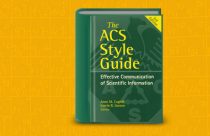How to Cite in Harvard Referencing Style

Authors are required to follow referencing styles in academic writing. The Harvard style of referencing uses an author-date format for citations. Unlike other referencing styles, the Harvard style of referencing differs between institutions. However, there are two elements in Harvard style: in-text citations and a list of references. Harvard style referencing is used in a wide variety of disciplines. Although there is no definitive version of Harvard referencing available, the author-date format increases the credibility and currency of the resources used. Since no definitive style of Harvard style is available, institutions frequently publish guides for it.
In general, every name that appears in in-text citations must also appear in the references list at the end of the document. Accordingly, every work that appears in the references list must also be cited in-text. However, there are examples to the latter rule. All the details of the references are crucial for correct citations. This includes the use of full stops and commas. In-text citations in Harvard style should include the author’s last name and the year of the publication. In addition, if quotations or paraphrases are used, a page number should be given.
Guidelines for In-Text Citations
Harvard style referencing is usually accompanied by strict rules for in-text citations and references. When the information taken from a text is prominent, author’s last name and the year of publication should be placed at the end of the sentence. For example:
- Bipolar disorder is a serious mental illness affecting 2% of the population (Kennedy 2007, p. 189).
- The field of mathematics is crucial for engineering studies (Metcalf 2006, p. 87).
- There are several breeds of dogs classified according to size (Johnson 2009, p. 56).
On the other hand, when the author is given prominence, the in-text citation should appear before the paraphrased or quoted text. Examples of this include:
- Gomez (2011, p. 34) stated that “smoking causes lung cancer in a proportion of smokers.”
- Loeb and Hammond (2014, p. 76) warned about the catastrophic effects of climate change.
In-text citation is bound by rules. When two authors are cited at the end of a sentence inside parentheses, an ampersand should be used to separate their last names. On the other hand, when authors are cited at the beginning of a sentence, “and” should be used to separate last names. For instance:
- Harrington and Monsanto (2016, p. 81) stated that allergic rhinitis may be caused by pet hair.
Examples of Referencing
A reference list should be found at the end of a manuscript, listing all authors that appeared in-text. Referencing is crucial for preventing accusations of plagiarism. It is also the primary means through which readers can identify sources and locate them. Aside from this, it allows you to acknowledge and give appropriate credit to the author. References also demonstrate the credibility and validity of arguments made in the manuscript. It is also a demonstration of the extent to which relevant literature is known. Lastly, it allows the writer to avoid academic misconduct and plagiarism.
A rule called the 2-em rule is applied to references with the same author but different works. The following is an example:
Granger, JY & Shelley, GT 2014, ‘Depression in adolescents as a precursor to schizophrenia,’ Journal of Psychiatry, vol. 15, no. 8, pp. 189-192.
___2015a, ‘The price of stigmatization of mental illnesses,’ Review of Psychology, vol. 1, no. 4, pp. 195-228.
___2015b, ‘Quality of life in borderline personality disorder patients,’ Review of Psychology, vol. 9, no. 5, pp. 167-175.
There are other general rules when writing the references page. The reference list should be placed at the end of the manuscript and appendices should appear after the reference list. The references should be headed by a centered title: References. Although it has been stated that all citations must be found in the references list, exceptions to this rule are classical works and personal communication. When no authors can be identified, these can be included in-text but not cited in the references list. References must be arranged in alphabetical order by the author’s last name. If there are two or more works by the same author, the earlier work should be listed first.
Referencing and In-Text Citations
For printed books (one author):
In-text: Davis (2009, p. 78) suggested that spectrophotometry is a crucial tool for DNA isolation.
References: Davis, JK 2009, DNA Isolation Using PCR, Institute for Genomics, London.
For printed books (two authors):
In-text: McCarthy and Go (2015, p. 65) found no differences between the intervention group and the control group.
References: McCarthy, TR & Go, SH 2015, Studies in Linguistics, Cambridge University Press, Cambridge.
For printed books (three or more authors):
In-text: Crossman, Henry and Schwartz (2016, p. 25) reviewed literature on aquatic ecosystems.
References: Crossman, TH, Henry, K & Schwartz, CD 2016, A Guide to Ecosystems, Cambridge University Press, Cambridge.
For journal articles:
In-text: Justifying violence is never correct (Killman & Dewy 2017, p. 98)
References: Killman, C & Dewy, LP 2017, ‘Violence in American Prisons,’ Journal of Criminology, vol. 10, no. 6, p. 98.
For magazines:
In-text: Devlin (2009, p. 32) reported higher crime rates in urban cities.
References: Devlin, Y 2009, ‘Urban Crime Rates,’ Toronto Star, 18 December, p. 32.
For websites:
In-text: Fey (2013) stated that mammals use body fat to keep warm.
References: Fey, B 2013, ‘Mammalian Physiology,’ The Sun, viewed 23 April 2014, http://www.thesun.com/mammalianphysiology.
For government publications:
In-text: Commonwealth of England (2015, p. 110) records ancestries.
References: Commonwealth of England, 2015, Ancestral Records, vol. 18, pp. 110-116.
Harvard referencing is easy to master once the basic rules are understood. Do not forget to cite, reference, and give credit to published works that you use in academic writing.









